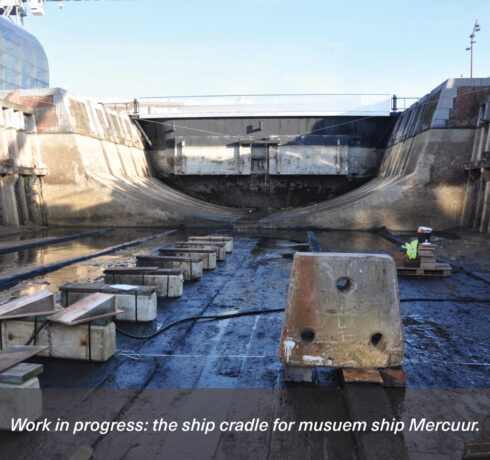The Vlissingen museum ship Mercuur was successfully moved from the Houtkade to the Dok van Perry on Monday 6 December. The former torpedo destroyer is now neatly moored again, and if for any reason the dock should ever run dry, the Mercuur rests safely and securely on a solid ship cradle. This support structure of concrete and wood was installed on 19 November by specialists from Damen Shiprepair Vlissingen, a job that was completed in a single day under the supervision of Dock Master Mark Gellen.
A ship cradle consists of concrete or steel blocks on which a ship rests when it is dry. In the course of last year, DSV was approached by the Vlissingen Maritime Heritage Foundation (In Dutch: SMEV), which manages the Mercuur, with the question of whether the repair yard would like to install a ship cradle in the ship’s new berth. “The foundation had a modest budget from the municipality of Vlissingen,” says Mark. “We therefore carried out the job for a friendly price, because we care about the Mercuur.” DSV supplied the centre line and the concrete side blocks for the ship cradle.
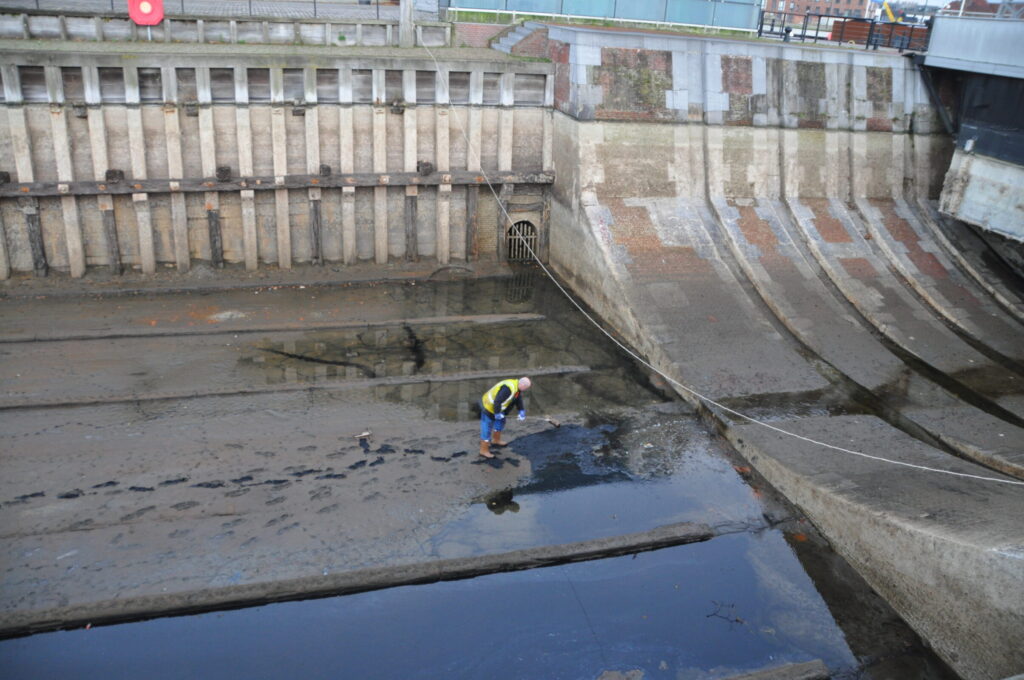 The floor of Dok van Perry is being prepared for the construcion of the ship cradle.
The floor of Dok van Perry is being prepared for the construcion of the ship cradle.
“We have plenty of blocks like this here at the shipyard,” says Mark. The heavy side blocks keep the museum ship balanced when it is dry, while the keel rests on so-called concrete blocks. These concrete blocks, 1.20 metres long and 30 by 30 centimetres thick, were supplied by Damen Naval.
Mark explains that a dry-lying Mercuur is actually supported by the centre line of the ship cradle. But the more than one metre high concrete side blocks with wooden wedges on top ensure that the ship does not capsize. “It is an old wooden ship with round edges. These rest on the wedges, which are slanted blocks made of wood.”
“We carried out the job for a friendly price, because we care about the Mercuur.” Mark Gellen
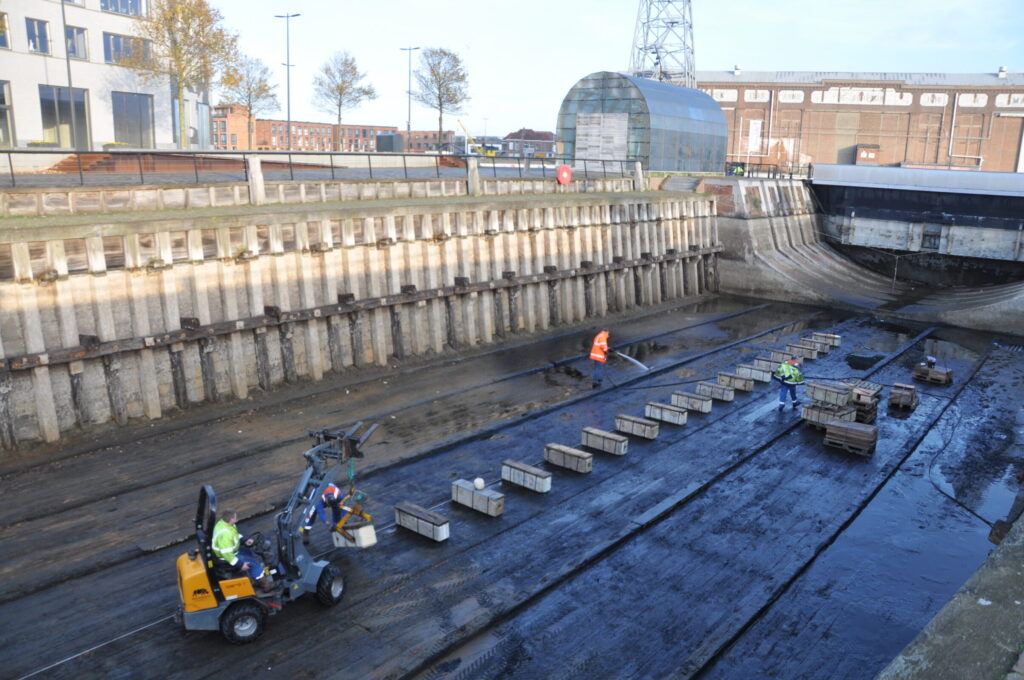 The concrete blocks for the centre line are being put in their place.
The concrete blocks for the centre line are being put in their place.
DSV carpenters sawed the wedges; a precision job, says Mark. “The wedges had to be cut to the right size, down to the last millimetre, because the ship’s hull has to fit exactly onto the wedges when the keel is placed on the centre line. The wedge has to be at the right angle to the ship’s hull, otherwise the ship will not lie perfectly in position on the ship cradle.”
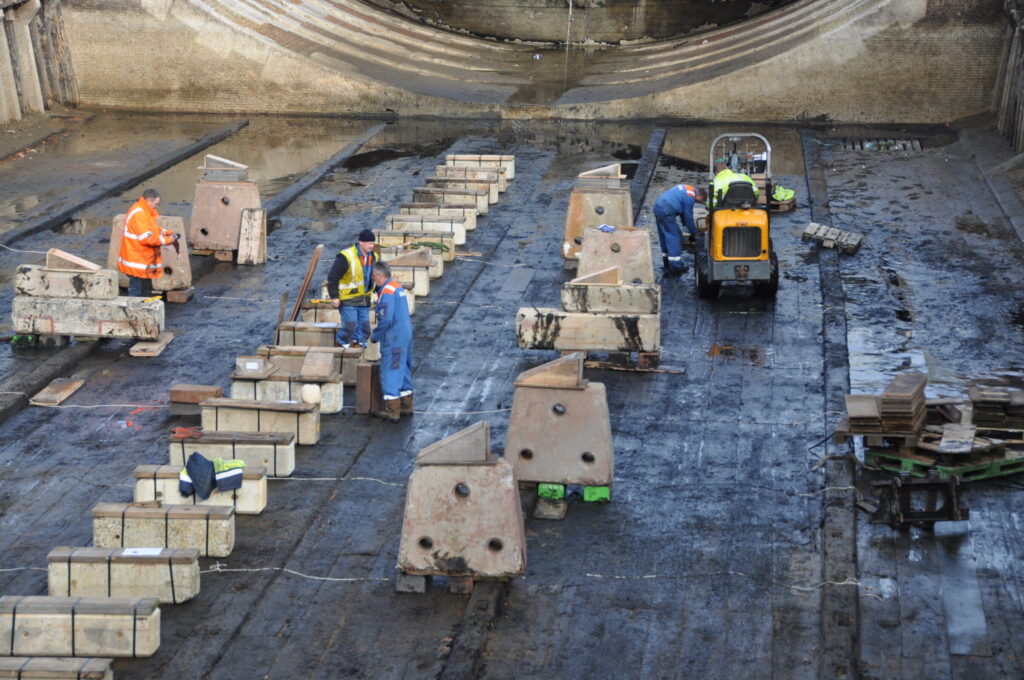 The more than one metre high concrete side blocks with wooden wedges on top ensure that the ship does not capsize.
The more than one metre high concrete side blocks with wooden wedges on top ensure that the ship does not capsize.
Mark looks back on the ship cradle operation with satisfaction, even though his team faced some challenges. “The floor of the dock was not completely flat,” he says. “It turned out that there were beams attached to it. De Schelde used to need these to support ships in the dock with piles. We therefore had to tuck the side blocks in to get them into position. And they had to be the right height, of course. If the side blocks are too high, the ship would hang, with all the damage that entails due to the pressure on the ship’s hull. And if they are too low, the ship is unstable.”
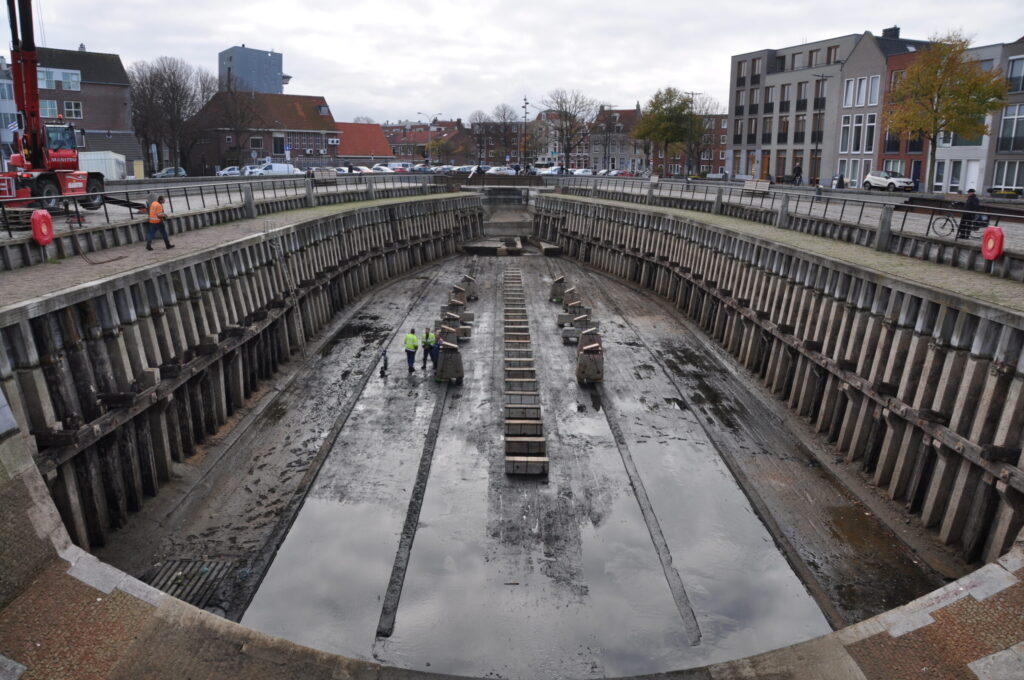 The ship cradle is finished and ready to hold museum ship Mercuur.
The ship cradle is finished and ready to hold museum ship Mercuur.
Entering the Dok van Perry on 6 December was an operation that required some management. At the point where the museum ship had to be towed into the dock, the harbour was just not wide enough, so the Mercuur had to be towed in at an angle. The precision towing operation was skilfully performed by a mooring barge of the Flushing Boatmen Company (Vlissingse Bootliedenwacht). The boatmen also deployed the VB 2, a somewhat larger boat that stayed behind the Mercuur while entering the harbour. Once the museum ship was in position, it was secured with mooring lines to withstand all types of weather.
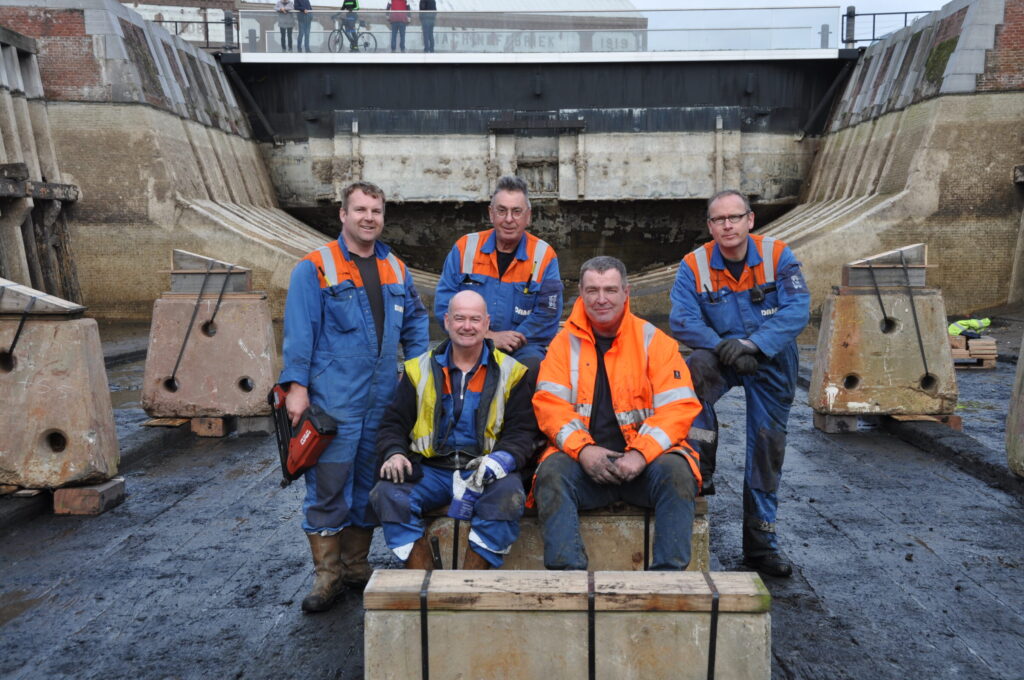 The team: (standing l-r) Ferro Valastek, Sjaak Schonis and Foreman of the Dokdienst DSV Eelco Jansens, (seated l-r) Production coordinator of the Dokdienst DSV Jacques van Belois and Dock master of DSV Mark Gellen.
The team: (standing l-r) Ferro Valastek, Sjaak Schonis and Foreman of the Dokdienst DSV Eelco Jansens, (seated l-r) Production coordinator of the Dokdienst DSV Jacques van Belois and Dock master of DSV Mark Gellen.
“I am pleased that we were able to help the SMEV with the installation of the ship cradle,” concludes Mark, who points out that the ship cradle is on loan from Damen. “The contacts with the SMEV board have existed for a long time. Before the Mercuur docked in Vlissingen in 2017 as a museum ship, we stripped her of asbestos at the shipyard in ‘Oost’ and gave her a paint job.” HNLMS Mercuur was built in the United States and was in service with the Royal Netherlands Navy from 1954 to 1973 as an ocean minesweeper of the ‘Onversaagd’ class (comparable to the Aggressive-class minesweepers of the US Navy).
The ship was then still called HNLMS Onverschrokken. After her retirement in 1973, she was converted to a torpedo destroyer and entered service with the Submarine Service as HNLMS Mercuur.
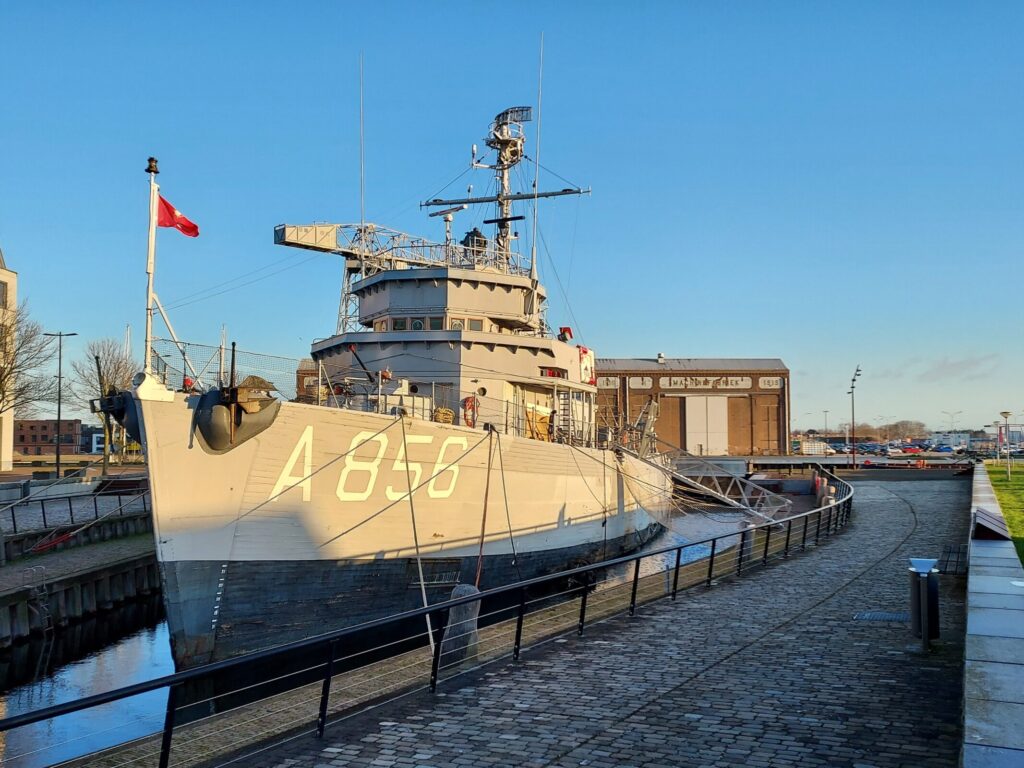 Safe and sound: museum ship Mercuur rests on the new ship cradle in the Dok van Perry.
Safe and sound: museum ship Mercuur rests on the new ship cradle in the Dok van Perry.

